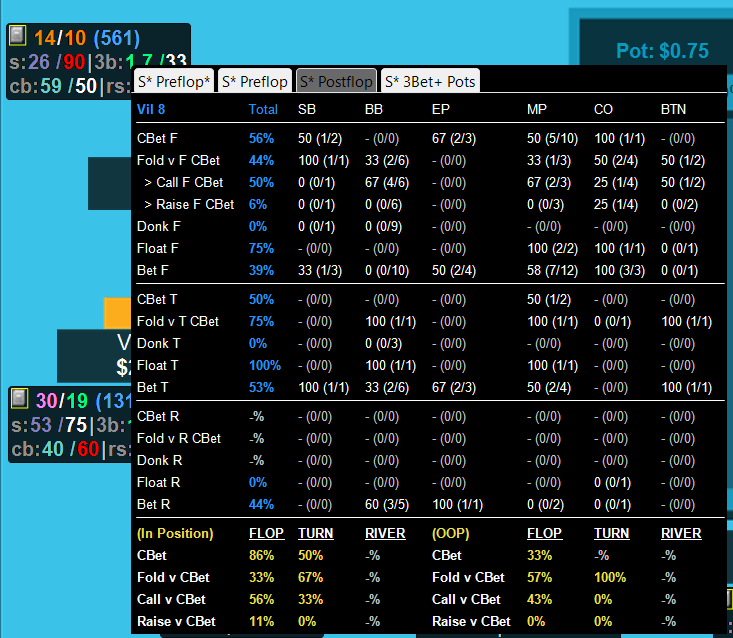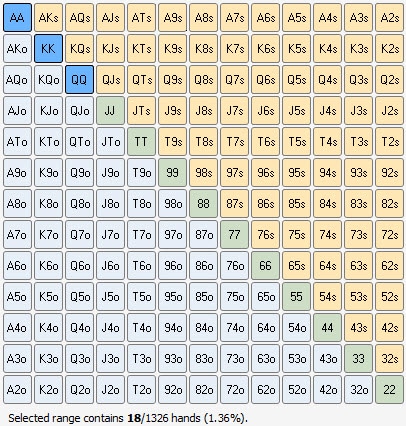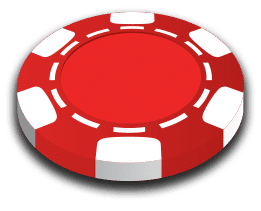It seems like online players get all the perks sometimes. They get to play more hands/hour, they can multi-table, and they get huge bonus programs that tower over the paltry $1/hour most live rooms offer. But the greatest tool they have access to is the HUD. The heads up display that shows information on all the hands you’ve played against each opponent.

But while live players are forced to see Seat 3’s ugly mug rather than a username with HUD stats wrapped around it, there are ways to harness the power of the HUD with some mental exercise. All a HUD really does is show us a single stat where the formula is:
Actions/Opportunities
VPIP is just (times a player put money into the pot voluntarily)/(times a player has a chance to put money into the pot voluntarily). This same concept is true for everything from PFR to Turn CB%. We could technically get out a pen and paper to get track of these things by hand. It would be clunky, and would raise a lot of eyebrows from our opponents…but it is possible.
Not sure what VPIP is? Start here:
Free VPIP VideoRather than look like a goofball with pen and paper there are some tricks you can use to estimate stats on the fly. You may be asking yourself why you would even WANT to do this. There are two major benefits to this:
- It will force you to become more analytical and put numbers/stats behind actions
- You can translate stats to realistic ranges with practice.
The only real way to do this is to pay attention. Like, seriously pay attention. Don’t sit there texting, checking Twitter on your phone, or watching the game on TV. Pay attention to your opponents and begin taking mental notes on how often they do things. The big things I keep track of from a numerical point of view are:
- How often they open-raise
- How often they limp preflop
- How often they call preflop raises
- How often they 3bet preflop
- How often they C-Bet
This isn’t to say that you couldn’t keep track of how often they limp/re-raise or double barrel the turn…but those actions happen less often. You want to keep track of actions that happen more often so you can gather solid sample sizes on them. Knowing my opponent check-raised the turn 1 time/1 opportunity doesn’t tell me that they really check-raise 100% of turns.
You probably noticed that 4/5 of the numbers that I track are preflop oriented and give me both VPIP and PFR. Preflop actions happen the most often, and thus I like to pay special attention to them to get ideas on the ranges players are using to go postflop. That information alone is incredibly beneficial and can drastically improve your hand reading abilities. These stats are also huge indicators of player type…which I can then use to estimate default ranges and adjust my play accordingly.
So back to the concept of using a HUD in live games. Take an example where I’ve seen Albert, the guy in seat 2, put money into the pot 4 times in the last hour. This is something you can easily calculate in your head. Well you can simply take the number of actions/number of opportunities or in this case 4/33. I use 33 because in live poker it’s a safe estimation that you see about 33 hands/hour, and thus over a single hour he had an average of 33 opportunities. If you can easily do 4/33 in your head, then you have see he has a VPIP of roughly 12% thus far. But what if 4/33 isn’t easy for you to do in your head?
A quick trick I use is to get the denominator to 100, since X/100 is super easy to work with. If we think back to 4th-grade math, we need to multiply the denominator and numerator by the same number to ensure the fraction is equal. So:

…you are not literally increasing the sample size
If we use the assumption that we play about 33 hands/hour in a live game, then over 1 hour you can use a multiplier of 3, over 2 hours you can use a multiplier of 1.5, and over 3 hours you already have 100 hands and thus a very easy-to-work-with denominator! Again, you are just creating equal fractions IF that’s easier for you to work with.
In this example, we’ve played with Albert for about an hour. An hour, or 33 hands, isn’t a huge sample size. Online I really only look at VPIP and PFR stats over a 33 hand sample size. And thus over just an hour or so of live play I focus on these stats since they happen in every hand and their reliability increases quicker than stats like 4bet% and TurnCB%. Small sample sizes give you an idea of stats like VPIP and PFR…but there is still a lot of uncertainty in how real these stats are. For great reliability, you’d need to play against your opponent for many hours and in different game dynamics to ensure other players and card dead-ness aren’t creating a sizable change in their statistics.
Now, I do this same thing for other stats as well, including 3bet %. Say I’ve been playing with Albert, that same guy in seat 2, and he’s 3bet once in 2 hours. Well after 2 hours I can multiply the stat by 1.5, to estimate that he’s 3betting 1.5% of hands. Again, this is a rough estimation…but if I look at what 1.5% of hands look like, it’s likely in the correct ballpark. And playing against his nitty 3bets will be very easy!

To be fair, I played a lot of full ring online, so I have a solid understanding of stat ranges per player type. For instance, a TAG at full ring (9 handed online) may have a VPIP of 15%. This means that they play roughly 15% of the hands they are dealt. To extrapolate a bit, that means they would play roughly 5 hands per hour at a live table. So I know that if I see a player constantly playing many more than just 5 hands/hour they are likely a LAG or possible fish. Starting to see why I pay so much attention to preflop actions/opportunities? Just knowing a player’s VPIP and PFR can help you estimate a player type and default ranges for that player type!
If you don’t have much experience with a HUD and assuming player types and ranges based upon stats, just use a free program like Equilab and learn how stats and ranges are related. For instance, if a player raises 10% of hands then you can assume it looks something like 22+/AJ+/KQ (10.7% of hands). That’s not a very loose range, and thus this player is tight and likely a nit or TAG. You can then use that information to extrapolate that they likely know what a Cbet is postflop, have a tight 3bet range, etc. Whereas you wouldn’t assume that for someone playing 60% of their hands, many in a passive way preflop.
The moral of the story is that if you practice this and exercise your brain enough, you will begin to visualize a HUD while playing live. You will get so used to doing this that it becomes second-nature. And once you get used to keeping track of a player’s “HUD”…you will learn to convert those numbers into real ranges that you can then use to punish your opponents! Just remember that over an hour you multiply the actions by 3 to estimate the %, over 2 hours you multiply it by 1.5. Again, the more you practice this the easier it becomes!


Very interestig articel. 😀
live game player looking to play online. question; should I signup to a online poker site and learn the details of their software program or buy a hud first and learn how to use that software before
I signup for a online poker site??
help please
Find a site you like first, ensure that something like PokerTracker 4 will work on it, and once you are sure you like the site THEN setup PT4 imo.